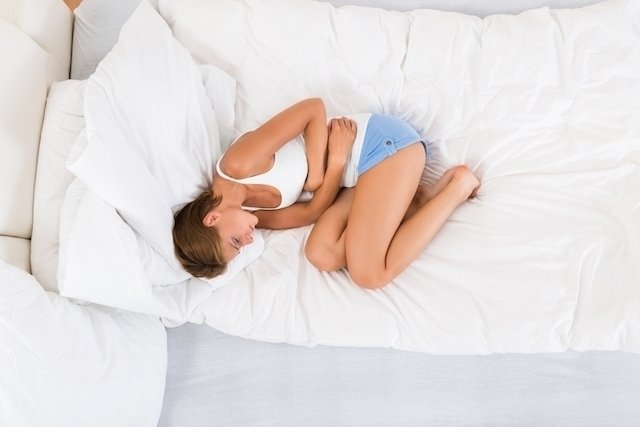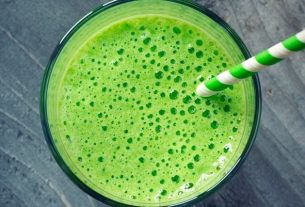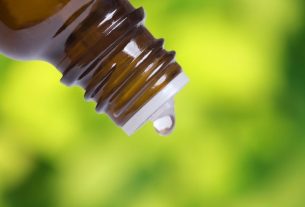Some tricks to get rid of menstrual cramps quickly are placing a bag of warm water on your abdomen, drinking ginger tea with valerian or eliminating caffeine from your diet, for example, as they improve blood circulation in the abdomen and relax the uterus, relieving pain. pain and discomfort.
Menstrual cramps, also known as dysmenorrhea, are caused by inflammatory substances, called prostaglandins, causing contractions in the uterus, resulting in pain and discomfort, and may be accompanied by nausea, vomiting or headache, for example.
Read too: Menstrual cramps: what it is, symptoms, causes and treatment
These tricks can help alleviate the pain of menstrual cramps, however, if the pain is intense or frequent, it is recommended to consult a gynecologist to identify if there is any other cause, such as endometriosis, and thus begin the most appropriate treatment.
How to relieve menstrual cramps
Tips for reducing menstrual cramps naturally include:
1. Warm water compresses on the abdomen
Applying a warm water compress to the abdomen is a very effective technique for eliminating menstrual cramps, as it helps to relax the muscles in the abdominal region and relieve cramping pain.
To do this technique, simply place a bag of warm water or warm compresses on the abdomen, at the location of the cramps, and leave for 10 to 15 minutes.
If the bag is very hot, it should be allowed to cool slightly and protect the skin from direct contact by placing a towel or cloth between the bag and the skin.
2. Drink ginger tea with valerian
There are several teas with properties that can help relieve menstrual cramps, however, two plants that seem to have a strong effect in relieving discomfort are ginger and valerian, which can be combined in the same tea to obtain a greater effect.
To do this, simply make a tea by placing 2 cm of ginger root with 1 teaspoon of valerian root in 250 mL of boiling water and letting it rest for 10 to 15 minutes. Then it must be strained, allowed to cool and drink 2 to 3 times a day.
This tea combines the anti-inflammatory power of ginger with the relaxing effect of valerian, allowing you to alleviate various types of menstrual discomfort, including cramps. Furthermore, as it contains valerian, this tea can also be an excellent option for women who suffer from anxiety attacks during menstruation, for example.
Check out other home remedy options to treat menstrual cramps.
3. Use reflexology points
Reflexology is a natural therapy that uses pressure on certain points on the body to combat pain and alleviate other types of symptoms. As it is a natural practice, it has few contraindications and, therefore, can be used by any woman at home.
One of the most important points to reduce the discomfort caused by menstrual cramps is the “Mansion Cottage” point, which is located on the line just above the pelvic region, in the place where the abdomen connects with the legs.
To use this point, simply apply slight pressure to the area, using the palm of your hand or a finger, and, maintaining the pressure, perform a small circular massage for 5 to 10 minutes.
4. Exercise for cramps
Some exercises that help reduce menstrual cramps are:
- Exercise 1: lie on your back and bring your knees to your chest, holding your legs with your hands;
- Exercise 2: Lying on your back, bring your feet together and pull them as close to your buttocks, opening your legs outwards.
Furthermore, doing regular exercise releases endorphins, which act as a natural painkiller and improve mood.
Therefore, practicing physical exercise regularly such as walking, swimming, yoga or cycling, for example, can help prevent or reduce menstrual cramps.
5. Massage the belly
Massaging your belly can help relax your pelvic muscles and relieve menstrual cramps quickly.
To enhance the effect of the massage, you can use essential oils, such as lavender essential oil, mixed with a carrier oil, such as coconut oil, sweet almond oil or even olive oil, and apply to the skin, massaging the belly in movements circular. See how to massage your belly to relieve menstrual cramps.
6. Drink more water
Drinking more water helps reduce the bloating in your belly that can cause more pain and discomfort from menstrual cramps.
Additionally, drinking more water helps improve blood flow in the body, including the uterus, reducing the length of menstruation and the intensity of cramps.
Read too: 10 health benefits of water (with tasty recipes)
7. Consume anti-inflammatory foods
Consuming anti-inflammatory foods, such as turmeric or spinach and foods rich in omega-3 such as tuna, sardines, salmon, flaxseed or chia, help reduce the production of inflammatory substances and relieve menstrual cramps more quickly.
These foods should be consumed daily or, in the case of fish, at least 3 to 5 times a week. Check out the complete list of anti-inflammatory foods.
8. Don’t drink caffeine
The caffeine present in coffee, teas, energy drinks and chocolates, as well as alcoholic beverages, are substances that seem to worsen the intensity of cramps in most women.
For this reason, it is important to remove, or at least reduce, the consumption of this type of food in the diet during crises.
9. Avoid eating sweets and salty foods
Sweets and savory foods cause bloating and fluid retention, increasing the appearance of menstrual cramps.
For this reason, it is important to have a balanced diet, trying to avoid excess sweets and salty foods and eating more vegetables, fruits, chicken and fish, with small meals and breaks between them.
10. Consume foods rich in magnesium
Some studies (1,2) showed that magnesium can help reduce the production of prostaglandins that cause contractions in the uterus, and in this way, can prevent or reduce menstrual cramps.
Therefore, it is recommended to consume foods rich in magnesium, such as seeds, peanuts, oats, bananas or milk, for example. See the complete list of foods rich in magnesium.
Furthermore, another option is to use magnesium supplements prescribed by your gynecologist to prevent menstrual cramps.
What to do when colic doesn’t go away
In cases where the colic does not go away with home measures, it is recommended to consult a gynecologist so that an evaluation can be carried out and the best medicine to alleviate the colic can be indicated.
Make an appointment with a gynecologist in the region closest to you:
Taking care of your health has never been easier!
Colic remedies have analgesic, anti-inflammatory or antispasmodic action, promoting pain relief and reducing uterine contractions.
Some examples of colic remedies are ibuprofen, ketoprofen, scopolamine and paracetamol, for example, which are recommended by the gynecologist according to the intensity of the colic and the presence or absence of associated symptoms. Learn more about colic remedies.

Sign up for our newsletter and stay up to date with exclusive news
that can transform your routine!
Warning: Undefined array key "title" in /home/storelat/public_html/wp-content/plugins/link-whisper-premium/templates/frontend/related-posts.php on line 12
Warning: Undefined array key "title_tag" in /home/storelat/public_html/wp-content/plugins/link-whisper-premium/templates/frontend/related-posts.php on line 13




